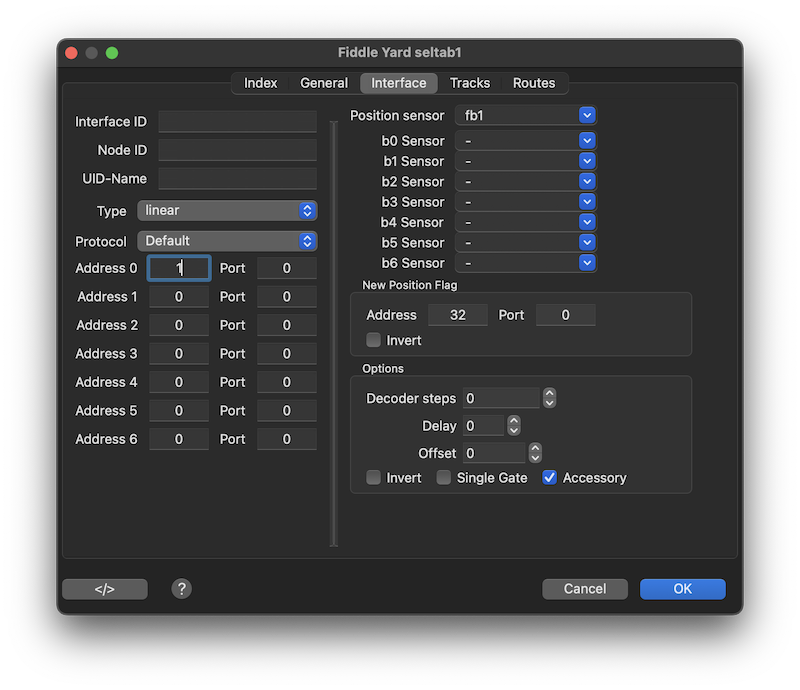Table of Contents
Interface
Content → Objects → Fiddle Yard
Fiddle Yard Dialog Interface Tab.

Default setup using switch commands.
Interface ID
If more than one command station is used, then the command station that is responsible for controlling the decoder is specified in this field. The "Interface identifier" field can remain empty if the object is connected to the first command station (first 'digint' in rocrail.ini) from the list of command stations.
Bus
See: Addressing
UID-Name
Alternative to the Bus number supported by:
- BiDiB (String: Username)
- RocNet
Type
| WIO | Stepmotor |
| Multiport | Set wanted position by multiple outputs |
| Linear | Use the first address/port for track 1 and increase this address for higher track numbers. |
| generic | The destination address is entered in the tracks under Address. |
Protocol
Fiddle Yard decoder type.
| Type | Description | Command type |
|---|---|---|
| D | Command Station default | switch |
| M | Motorola | switch |
| N | NMRA DCC | switch |
| MP | Multiport | programming (LocoNet+LocoIO) |
| Tip: For GCA145 on RocNet select type "D" |
Position register
Position range is 0-127.
| Address | Position nible |
|---|---|
| 0 | 0 |
| 1 | 1 |
| 2 | 2 |
| 3 | 3 |
| 4 | 4 |
| 5 | 5 |
| 6 | 6 |
Leave address 4..5 zero if the FY has a range of 0…15.
Invert
Invert the commands: Zero is on.
Single Gate
If the system has a flat addressing scheme like CBUS.
Accessory
The switch commands will set the accessory flag which is for some command station, like DCC++, important to determine DCC or I/O.
Position Sensor
Sensor which signals the end of move.
This event should also be send if the Fiddle Yard was already in the wanted position!
b0-b6 Sensor
The position byte is set by the Fiddle Yard.
No new command will be send if the wanted position equals the reported position and the position sensor is also high.
Leave b4…b6 empty if the FY uses a range of 0…15.
New position flag
This output is used to signal the FY controller that the new position is set.
By default to signal '1' the thrown command is send. Use the Invert option to swap this.
| Tip: This must be a pulse output. The pulse must be long enough to be seen by the FY controller. |

